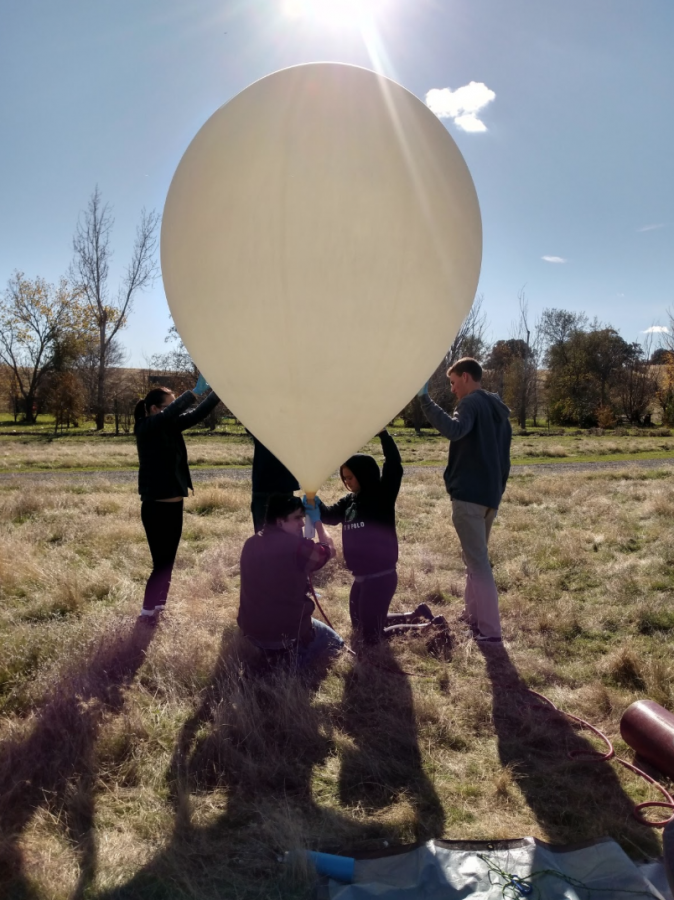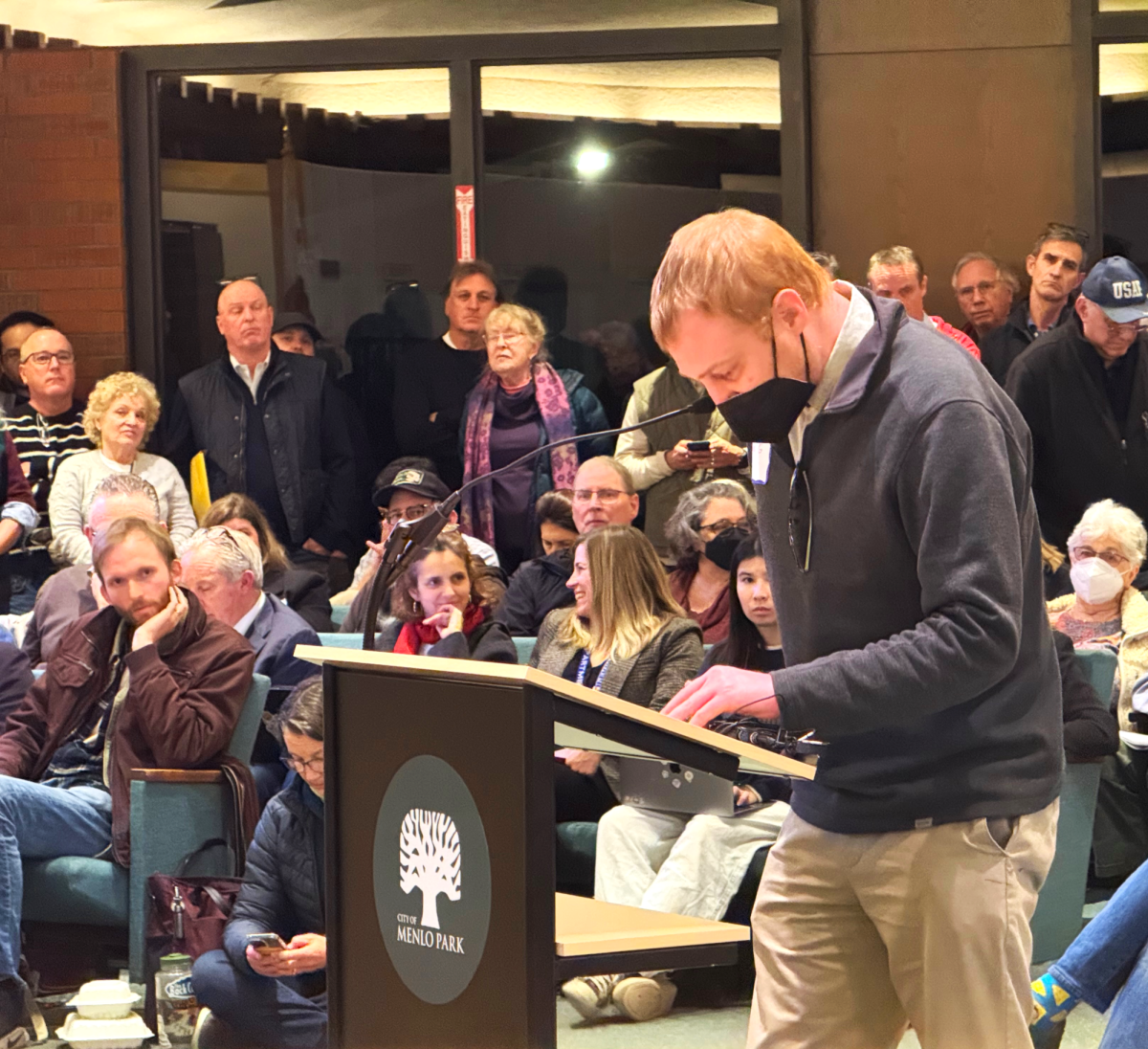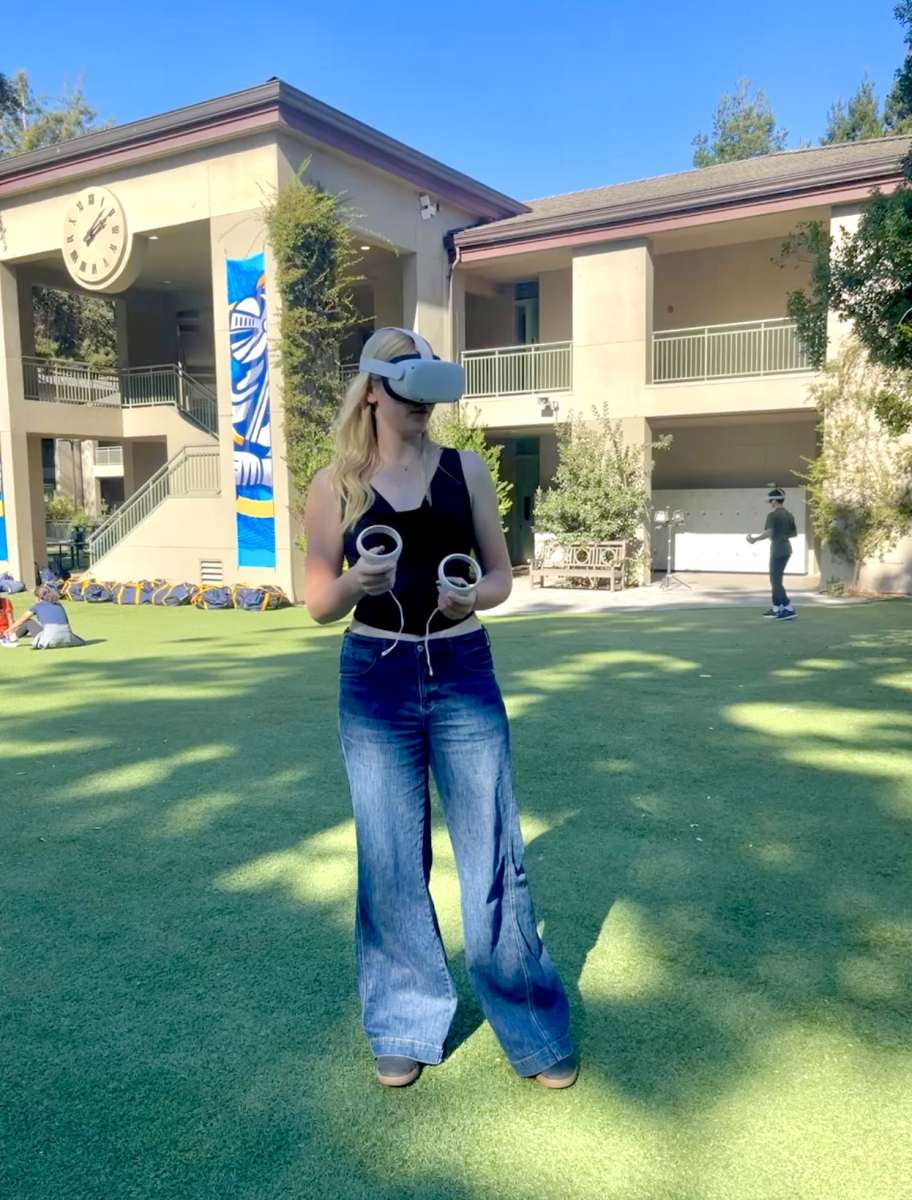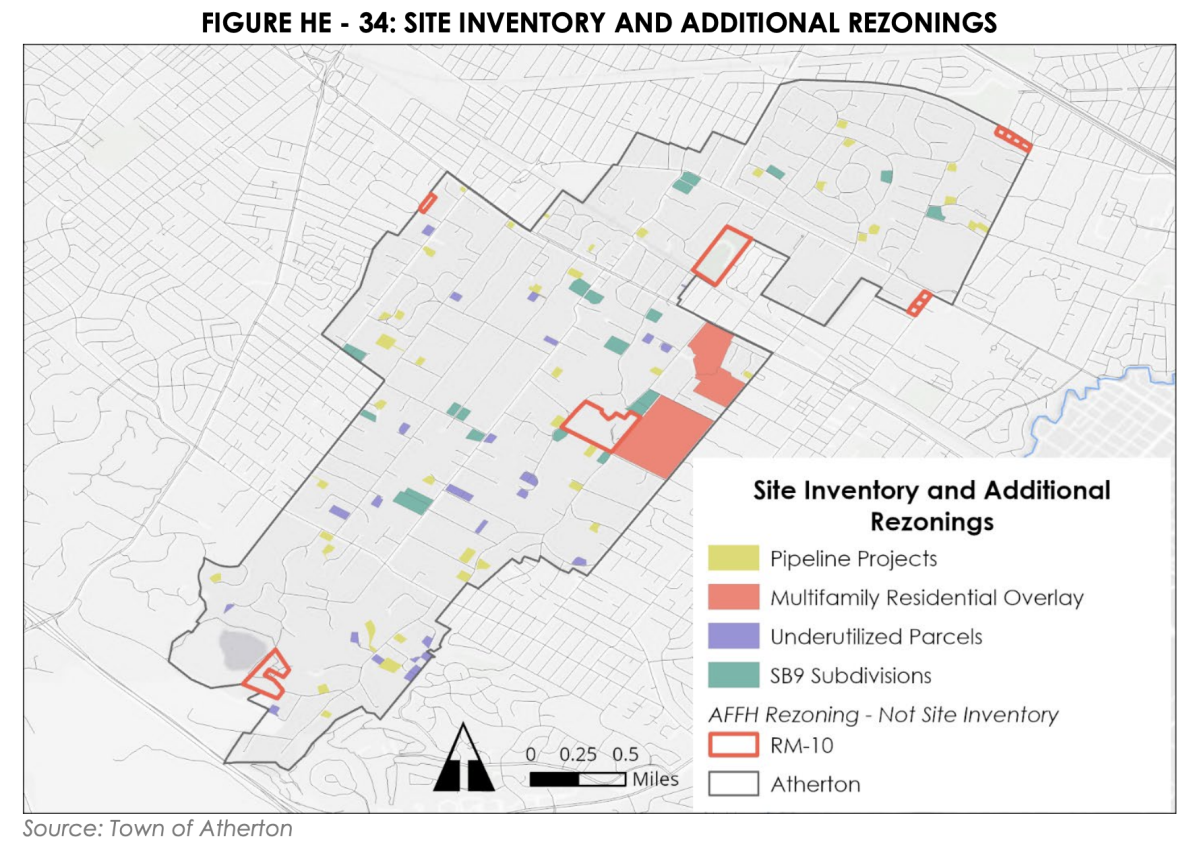Students work to launch their balloon in an open field. Photo courtesy of Thomas Brown.
By Connor Van Ligten
The ASR Balloon launch has been a staple of the Menlo Engineering community. James Dann and his band of budding engineers launch a balloon into the sky each winter. With the hopes of getting high quality photos of planet earth from above, the balloon launch has wowed students and teachers alike.
This year was no different, as the launch, although delayed to Monday, November 27 due to weather, was a resounding success. “This was definitely one of the highlights of ASR,” senior Sarah Kornfeld said. “It was satisfying to see that our hard work paid off. It was also super fun to go search for the payloads because we had no idea what to expect,” she said.
ASR teacher James Dann praised the class for its stellar work. “[The groups] all got data, they all tracked their payload, and they all worked together really well as a team,” Dann said. “It was a big success and I’m proud of the students for their work.”
The original concept for the launch goes back to Dann’s own work before he arrived at Menlo, all the way back to 2002, when he was working on satellites that would take photos from orbit. “When I was working on it, it was in the very very early stages. The idea was to send a particle physics detector into space to look for these gamma rays, as I was in research in particle physics at the time,” Dann said. “So we designed this particle physics detector for the Satellite, but we used some off the shelf stuff, and we wanted to make sure this worked in space conditions, so rather than the send the expensive whole satellite up, we worked with NASA to send a weather balloon to go up into near space just like the ASR students do.”
This was an experience that always stuck in his mind, even when he joined Menlo. “When I started getting into teaching, I thought this would be really fun to do with students. In the beginning, I just did a tethered launch in the first year of ASR.” After former Menlo student Patrick Costello wanted to do a space launch for his second semester ASR project, Dann decided to include a space launch as a group project for all ASR students, and it has become a cornerstone of the ASR program ever since.
The balloon launch may have had interesting beginnings, but it continues to grow. “It’s really evolved over the years into a great experiment,” Dann said. “Everyone has an individual experiment where they take data, and they also have an engineering part to the team to ensure the launch, whether it’s radio engineer, cutdown, mechanism, or payload design or software engineer, et cetera.”
Usually, the ASR team does an on-campus launch with a smaller balloon using a tether to practice. “In terms of organization for the project, usually there’s 7 member teams and everyone has their own job, and they also have to do an individual experiment,” said Dann. “Those all get sent up in one payload. We have a total of 4 teams, so we’ll launch 4 balloons.” Although Dann hoped to recover all 4 balloons, he noted that success is not ensured due to the high flying nature of the payloads. What’s most important to Dann is that his students get an experience of working as a team, which is not easy but is an important learning experience.
Not every launch has gone swimmingly. Dann has had a few interesting experiences with bungled launches. Whether the payload lands in a tree, in a jungle where students have to hack through vines, or on someone’s property, the ASR team has to be ready for every outcome. Overall, the balloon launch has always been a fun experience for all students involved, and this year was no different. “We found all four payloads, so that was ideal. We also found them before it got dark, which was also ideal.” said senior Gary Marston, who pointed out that every group also got usable data from their payloads. One thing is for certain: successful or not, the balloon launch will be a cornerstone of the ASR program for years to come.








